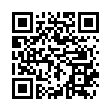By this point, I suspect even the least techy of my readers has seen the little square barcodes… like everywhere. They are square for a reason, they are 2 dimensional barcodes, there is information stored both vertically and horizontally, whereas traditional barcodes only scan horizontal measures.
Below are 2 barcodes that related to resources in GITI. The first is a QR code, the 2nd, a standard code 39 barcode. While the initial reaction may be “wow, the QR barcode is huge!”, you would be correct. It is rather large as barcodes go, but it also contains the exact location inside GITI for me to retrieve the data it is pointing at, whereas the 2nd one only provides me a barcode for the assignment number. While initially the idea of using barcodes inside GITI was merely to facilitate end-of-semester grade updates and the like, it was designed with the intention of using a standard barcode reader, which in reality is quite annoying, and saves very little time, especially with numbers so small. QR codes on the other hand, will allow me to scan the code using a basic smart phone camera, or other such device and have direct access to the data I am looking for. On such a small device it is quite a handy thing to not have to type the URL and then the number to access what I’m looking for.
 |
On the other hand, there are serious culturally implications to the use of QR codes. The widespread use of QR codes is more infectious than the wide use of barcodes because of who they target. Barcodes target only “information personnel”, who serve a function in a data collecting system, such as sales clerks, librarians and hospital staff. QR codes affect a much larger number of people. The integration between human and machine has perhaps become too close. People already are very attached to their smartphones, whether staring mindlessly at the screen, letting it control their schedule or being directly connected to it by a Bluetooth headset. This takes it a step further and makes technology pervasive in all sorts of printed materials, advertising and product packaging. Barcodes at least have a human readable component, QR codes do not. So why are they presented so prominently in human view? To allow the human that is thoroughly integrated into their device to retrieve information more quickly, perhaps almost with machine-like precision.
So why would I want to use the evil little buggers? I am an information worker, and I enjoy geeky little things like this. I like to experiment with things like this. While I may include the QR codes occasionally on things, I don’t see it being something I take on with any seriousness. I have for the moment added the ability to use them to GITI for the view assignments action only. If they prove useful they may stay, if not, then [POOF]. My primary use for them, as I am considering their usefulness at the moment would be on printed materials that I produce (such as final papers), giving them a QR code for locating a PDF copy or some such craziness.